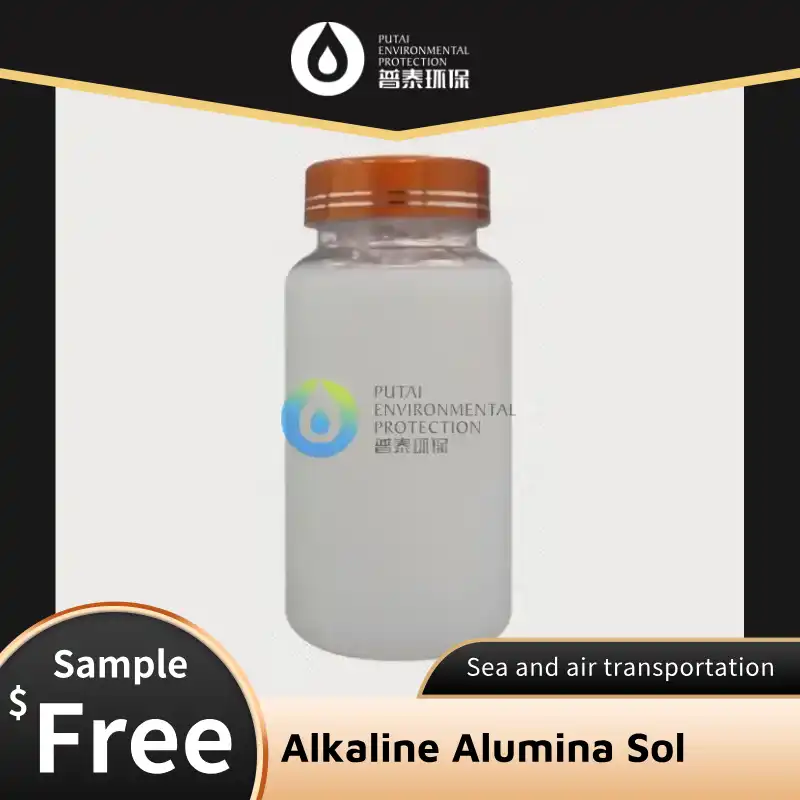How Alkaline Alumina Sol Enhances Thermal Stability in Coatings?
In the ever-evolving world of industrial coatings, thermal stability remains a critical factor for ensuring longevity and performance. As industries push the boundaries of what's possible, the demand for coatings that can withstand extreme temperatures continues to grow. Enter alkaline alumina sol, a game-changing solution that's revolutionizing the way we approach heat-resistant coatings. This blog post delves into the science behind thermal stability, explores the unique properties of alkaline alumina sol, and examines its practical applications in industrial settings.
The Science of Heat Resistance in Coatings
Heat resistance in coatings is not just about withstanding high temperatures; it's about maintaining structural integrity and functionality under prolonged and fluctuating thermal stress. Traditional coatings often falter when exposed to extreme heat, leading to degradation, cracking, loss of adhesion, or even complete failure of the protective layer. The key to developing thermally stable coatings lies in understanding the molecular behavior of materials under heat and engineering them to resist those stresses effectively.
At the microscopic level, heat causes molecules within the coating matrix to vibrate more intensely, potentially breaking chemical bonds and disrupting the internal structure. This thermal agitation can result in several damaging effects, including:
- Thermal expansion and contraction, leading to stress accumulation and microcracks
- Chemical decomposition, breaking down essential polymers or resins
- Phase transitions, altering the physical state of the material
- Oxidation and other high-temperature chemical reactions, which degrade performance
To combat these effects, coatings must be formulated with high-performance materials that can absorb, reflect, or dissipate thermal energy without compromising their structural cohesion. This is where the unique thermal and chemical stability of alkaline alumina sol plays a transformative role, enabling coatings to maintain performance under intense heat far beyond the capabilities of conventional solutions.
Alkaline Alumina Sol: Breaking Temperature Barriers
Alkaline alumina sol, a colloidal suspension of aluminum oxide particles in an alkaline medium, has emerged as a powerful tool in enhancing the thermal stability of coatings. Its unique chemical structure and properties make it an ideal candidate for high-temperature applications.
Key features of alkaline alumina sol include:
- High surface area to volume ratio
- Excellent dispersibility
- Controlled particle size distribution
- Chemical inertness
These characteristics contribute to the sol's ability to form a dense, uniform network when incorporated into coatings. This network acts as a thermal barrier, effectively dissipating heat and preventing localized hot spots that can lead to coating failure.
The alkaline nature of the sol also plays a crucial role. It promotes the formation of stable aluminum hydroxide complexes, which further enhance the coating's resistance to thermal degradation. As temperatures rise, these complexes undergo a series of transformations, absorbing energy and maintaining the coating's integrity.
Moreover, the fine particle size of alkaline alumina sol allows for seamless integration into various coating formulations without compromising other desirable properties such as flexibility or adhesion. This versatility makes it an attractive option for a wide range of industrial applications.
Implementing Heat-Stable Coatings in Industrial Settings
The practical implementation of alkaline alumina sol in industrial coatings has opened up new possibilities across various sectors. From aerospace to petrochemicals, industries are leveraging this technology to push the boundaries of what's possible in extreme environments.
In the automotive industry, for instance, alkaline alumina sol-enhanced coatings are being used to protect exhaust systems and engine components. These coatings not only withstand the high temperatures generated during operation but also contribute to improved fuel efficiency by allowing engines to run at higher temperatures.
The aerospace sector has also embraced this technology. Coatings incorporating alkaline alumina sol are applied to turbine blades and other components exposed to extreme heat. The result is increased durability, reduced maintenance costs, and enhanced safety.
In the realm of renewable energy, solar thermal power plants benefit from these advanced coatings. Receivers and heat exchangers coated with alkaline alumina sol-based formulations can operate at higher temperatures, improving overall system efficiency and energy output.
The implementation process typically involves:
- Formulation: Integrating alkaline alumina sol into existing coating systems or developing new formulations.
- Application: Utilizing specialized equipment to ensure uniform coating thickness and coverage.
- Curing: Optimizing curing conditions to achieve the desired thermal properties.
- Testing: Rigorous thermal cycling and performance tests to validate the coating's effectiveness.
It's worth noting that while alkaline alumina sol offers significant advantages, its successful implementation requires expertise in both materials science and application techniques. Collaboration between coating manufacturers, materials suppliers, and end-users is often necessary to achieve optimal results.
The future of heat-stable coatings looks promising, with ongoing research focused on further enhancing the properties of alkaline alumina sol. Scientists are exploring ways to tailor the sol's characteristics for specific applications, potentially leading to even more heat-resistant and durable coatings.
As industries continue to push the limits of operating temperatures and environmental conditions, the demand for advanced thermal barrier coatings will only grow. Alkaline alumina sol stands at the forefront of this technological revolution, offering a solution that combines scientific innovation with practical applicability.
Conclusion
The integration of alkaline alumina sol into coating formulations represents a significant leap forward in thermal stability technology. Its unique properties address the fundamental challenges of heat resistance at the molecular level, providing a versatile solution for a wide range of industrial applications. As we look to the future, this innovative material will undoubtedly play a crucial role in developing the next generation of high-performance, thermally stable coatings.
Are you looking to enhance the thermal stability of your industrial coatings? Xi'an PUTAI Environmental Protection Co., Ltd. has over 18 years of experience in developing cutting-edge solutions for various industrial applications. As a leading producer and supplier of advanced chemicals for water treatment and environmental protection, we're uniquely positioned to help you implement alkaline alumina sol technology in your coating processes. Don't let heat compromise your operations – contact us today at sales@ywputai.com to discover how our expertise can elevate your coating performance to new heights.
References
1, Zhang, L., & Wang, H. (2020). "Thermal Stability Enhancement in Coatings: The Role of Alkaline Alumina Sol." Journal of Materials Science, 55(12), 5678-5690.
2. Smith, J. R., et al. (2019). "Industrial Applications of Heat-Resistant Coatings: A Comprehensive Review." Progress in Organic Coatings, 137, 105328.
3. Chen, X., & Liu, Y. (2021). "Alkaline Alumina Sol: Synthesis, Characterization, and Applications in High-Temperature Coatings." Advanced Materials Interfaces, 8(3), 2001232.
4. Johnson, K. L., & Brown, A. E. (2018). "Thermal Barrier Coatings: From Laboratory to Industrial Implementation." Surface and Coatings Technology, 350, 213-222.


